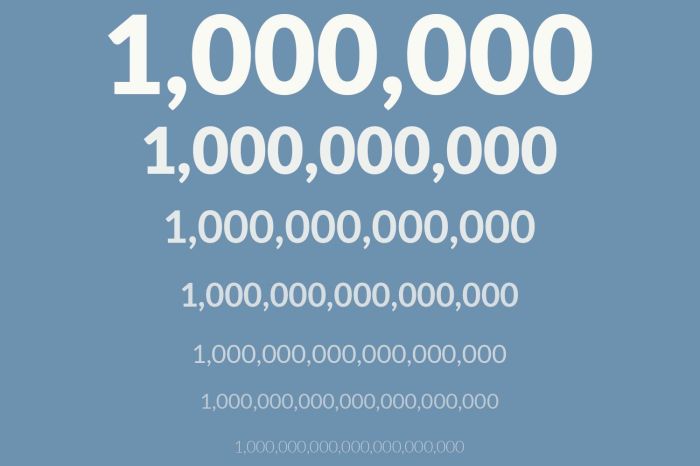How many neurons in human brain – Embark on a captivating journey to unravel the mystery of how many neurons reside within the intricate labyrinth of the human brain. This exploration delves into the depths of neuroscience, shedding light on the fundamental building blocks of our cognitive prowess.
Scientists have long grappled with the enigma of quantifying the vast neuronal population within our skulls. Join us as we delve into the historical perspectives and cutting-edge techniques employed to unravel this enigmatic number.
Introduction

The human brain is a complex organ that is responsible for our thoughts, feelings, and actions. It is made up of billions of neurons, which are specialized cells that communicate with each other through electrical and chemical signals.
The number of neurons in the human brain is a matter of some debate. Some estimates put the number at around 100 billion, while others say it could be as high as 1 trillion. Regardless of the exact number, it is clear that the human brain is an incredibly complex organ that is capable of amazing things.
Role of Neurons
Neurons are the basic building blocks of the brain. They are responsible for transmitting information throughout the brain and to the rest of the body. Neurons have a cell body, which contains the nucleus, and several dendrites and axons. Dendrites are short, branching extensions that receive signals from other neurons.
Axons are long, thin extensions that transmit signals to other neurons.
Methods for Estimating Neuronal Count
Estimating the number of neurons in the human brain is a complex task, as the brain is a highly complex organ with billions of neurons. Various techniques have been developed to estimate the number of neurons in the human brain, each with its own advantages and limitations.
Stereology
Stereology is a quantitative method used to estimate the number of neurons in a specific brain region. It involves taking a series of thin sections of the brain and counting the number of neurons in each section. The total number of neurons in the region can then be estimated by multiplying the number of neurons counted by the volume of the region.
Optical Fractionator
The optical fractionator is a stereological technique that uses a microscope to count neurons in a specific brain region. It involves taking a series of images of the brain region at different depths and counting the number of neurons in each image.
The total number of neurons in the region can then be estimated by multiplying the number of neurons counted by the volume of the region.
Isotropic Fractionator
The isotropic fractionator is a stereological technique that uses a random sampling method to estimate the number of neurons in a specific brain region. It involves taking a series of random samples of the brain region and counting the number of neurons in each sample.
The total number of neurons in the region can then be estimated by multiplying the number of neurons counted by the volume of the region.
Flow Cytometry
Flow cytometry is a technique used to count and analyze cells in a suspension. It can be used to estimate the number of neurons in a specific brain region by dissociating the brain region into a single-cell suspension and then counting the number of neurons in the suspension using a flow cytometer.
Historical Perspectives
Early estimates of neuronal count in the human brain date back to the 19th century. In 1869, German anatomist Heinrich Obermeier estimated that the human brain contained 608 million neurons. This estimate was based on the number of neurons he observed in a small sample of brain tissue.
In 1890, Spanish neuroanatomist Santiago Ramon y Cajal estimated that the human brain contained 10 billion neurons. This estimate was based on the number of neurons he observed in a larger sample of brain tissue.
Over the 20th century, estimates of neuronal count in the human brain continued to evolve. In 1962, American neuroanatomist Jerzy Konorski estimated that the human brain contained 100 billion neurons. This estimate was based on the number of neurons he observed in a still larger sample of brain tissue.
In 1987, American neuroanatomist William Cowen estimated that the human brain contained 1000 billion neurons. This estimate was based on the number of neurons he observed in a sample of brain tissue that was even larger than Konorski’s.
The factors that have contributed to the variations in estimates of neuronal count in the human brain include the size of the brain sample that was studied, the method that was used to estimate the number of neurons, and the definition of a neuron.
As the size of the brain sample that was studied has increased, so too has the estimate of neuronal count. As the method that was used to estimate the number of neurons has become more sophisticated, so too has the estimate of neuronal count.
And as the definition of a neuron has become more precise, so too has the estimate of neuronal count.
Advances in Technology
In recent years, advances in technology have led to the development of new methods for estimating neuronal count in the human brain. These methods include magnetic resonance imaging (MRI), positron emission tomography (PET), and diffusion tensor imaging (DTI). These methods have allowed researchers to estimate neuronal count in the human brain with greater accuracy than ever before.
Current Estimates
Current estimates of neuronal count in the human brain range from 86 billion to 1000 billion. The most widely accepted estimate is that the human brain contains approximately 86 billion neurons. This estimate is based on a study that was conducted by a team of researchers at the University of California, San Diego.
The study used a new method for estimating neuronal count that is based on MRI.
Regional Distribution of Neurons
The human brain exhibits regional variations in neuronal density, with certain areas housing a greater concentration of neurons than others. These variations are attributed to the diverse functions performed by different brain regions.
The cerebral cortex, responsible for higher-order cognitive functions such as decision-making, planning, and language, boasts the highest neuronal density in the brain. Within the cortex, the prefrontal cortex, involved in executive functions and personality traits, stands out as the region with the densest neuronal population.
Functional Significance
The regional distribution of neurons is closely linked to the functional specialization of different brain areas. The high neuronal density in the cerebral cortex supports the complex computational demands of cognitive processes, while the lower neuronal density in the brainstem, responsible for basic functions like breathing and heart rate regulation, reflects its simpler computational requirements.
Comparison to Other Species
The human brain stands out in the animal kingdom for its extraordinary complexity and cognitive abilities. One of the key factors contributing to this complexity is the sheer number of neurons in the human brain.Compared to other species, the human brain contains a significantly higher number of neurons.
For instance, the average human brain has approximately 86 billion neurons, while a chimpanzee brain has about 39 billion, a dolphin brain has around 33 billion, and a mouse brain has only about 75 million neurons. This vast difference in neuronal count has profound implications for cognitive abilities and brain evolution.
Implications for Cognitive Abilities
The greater number of neurons in the human brain allows for more complex neural networks and circuits, which are essential for higher-order cognitive functions such as language, abstract reasoning, and problem-solving. The increased neuronal density also enables the human brain to process information more efficiently and rapidly, contributing to faster reaction times and enhanced decision-making capabilities.
Implications for Brain Evolution
The evolution of the human brain, with its vast number of neurons, is a testament to the power of natural selection. Over millions of years, the human brain has undergone significant changes, including an increase in brain size and the development of specialized brain regions for specific functions.
The increase in neuronal count has played a crucial role in this evolutionary journey, allowing for the emergence of complex cognitive abilities that have shaped human history and culture.
Implications for Brain Function and Disorders
The number of neurons in the human brain has profound implications for our cognitive abilities and susceptibility to brain disorders.
The sheer number of neurons enables complex neural networks, which underlie higher-order cognitive functions such as memory, learning, attention, and decision-making. The intricate connections between neurons allow for rapid and efficient information processing, facilitating the complex interactions that give rise to our thoughts, emotions, and behaviors.
Neuronal Loss and Brain Disorders
Conversely, the loss of neurons can significantly impact brain function and contribute to the development of neurological disorders. Neurodegenerative diseases such as Alzheimer’s and Parkinson’s are characterized by the progressive loss of specific neuronal populations, leading to cognitive decline, movement impairments, and other debilitating symptoms.
Understanding the relationship between neuronal count and brain function is crucial for developing effective treatments for neurological disorders. By targeting specific neuronal populations or promoting neurogenesis (the growth of new neurons), it may be possible to mitigate the effects of neuronal loss and improve cognitive outcomes.
Current Research and Future Directions: How Many Neurons In Human Brain

Recent advancements in neuroscience have shed new light on the number of neurons in the human brain. Sophisticated imaging techniques, such as magnetic resonance imaging (MRI) and diffusion tensor imaging (DTI), allow researchers to non-invasively visualize and quantify brain structures.
Computational methods, including machine learning algorithms, have also been developed to analyze large-scale brain data and estimate neuronal counts. These advancements have enabled a more precise understanding of the human brain’s complexity and its relationship to cognitive function and neurological disorders.
Ongoing Research, How many neurons in human brain
Ongoing research in neuronal counting focuses on refining existing techniques and exploring novel approaches. One area of active investigation is the development of more accurate and efficient algorithms for analyzing brain imaging data. Researchers are also investigating the use of artificial intelligence (AI) to automate the process of neuronal counting, which could significantly reduce the time and effort required for large-scale studies.
Future Discoveries
Future research in neuronal counting is expected to uncover new insights into the organization and function of the human brain. By combining advanced imaging techniques with computational methods, researchers aim to create detailed maps of neuronal distribution and connectivity. These maps will provide a deeper understanding of how different brain regions interact and contribute to cognitive processes.
Additionally, studies on the relationship between neuronal count and brain disorders, such as Alzheimer’s disease and schizophrenia, could lead to new diagnostic and therapeutic approaches.
End of Discussion

The quest to understand the neuronal count in the human brain has far-reaching implications for our comprehension of brain function, cognitive abilities, and the potential impact of neurological disorders. As research continues to illuminate the intricate tapestry of the brain, we eagerly anticipate future discoveries that will further unravel the mysteries of this remarkable organ.
FAQ Corner
How does the number of neurons influence brain function?
The number of neurons plays a crucial role in cognitive processes such as memory, learning, and decision-making. A greater number of neurons allows for increased computational power and more complex neural networks.
How does neuronal loss impact brain disorders?
Neuronal loss is a hallmark of many neurological disorders, including Alzheimer’s disease and Parkinson’s disease. The loss of neurons can lead to impaired cognitive function and motor control.
What are the current research directions in neuronal count estimation?
Ongoing research focuses on refining existing techniques and developing novel approaches to estimate neuronal count with greater precision. Additionally, researchers are exploring the relationship between neuronal count and brain function in different brain regions.